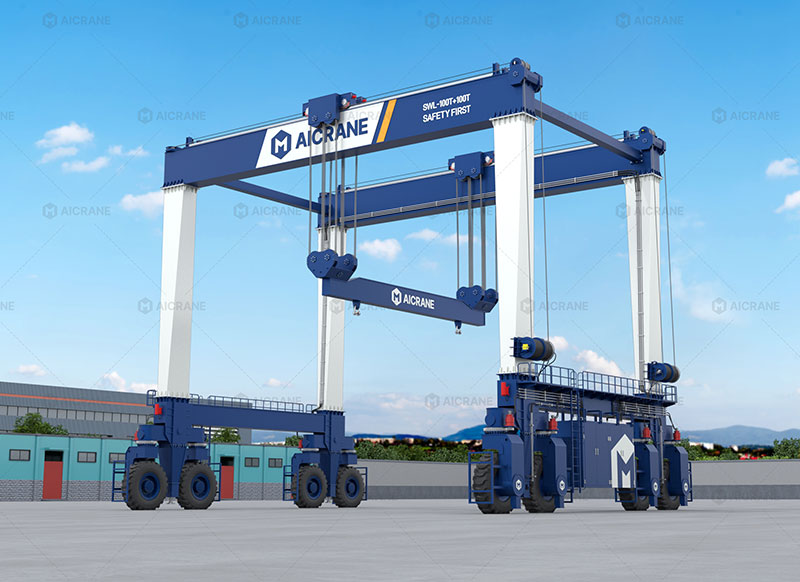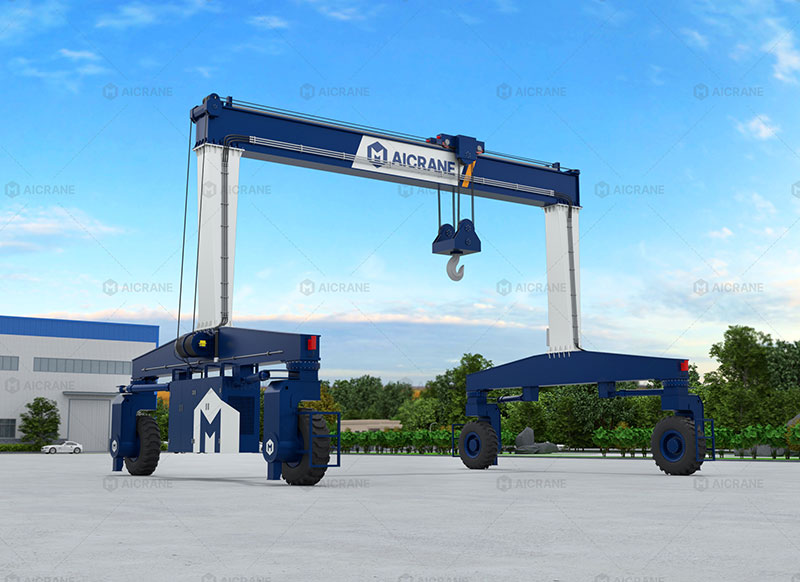Rubber Tyred Gantry (RTG) cranes are widely used in container yards, intermodal terminals, and industrial facilities for their flexibility, mobility, and heavy lifting capabilities. However, selecting the right RTG crane involves more than just checking the load capacity – it requires a deep understanding of multiple technical specifications and how they align with your operational needs.
In this article, we explore the most critical specifications to consider when choosing a rubber tyre gantry crane for your yard, so you can make an informed and cost-effective decision.

1. Lifting Capacity
The lifting capacity is one of the most important specifications of an RTG crane. It indicates the maximum weight the crane can safely lift, typically ranging from 30 tons to over 100 tons.
-
For container terminals, 40.5 tons (for single 40-foot containers) is a common requirement.
-
For precast concrete yards or industrial operations, heavier lifting capacities of 50-100 tons may be necessary.
Always consider not only your current lifting needs but also future growth and potential project demands when determining the capacity.
2. Span (Distance Between Wheels)
The span, or the horizontal distance between the legs of the crane, dictates how many rows of containers or equipment the crane can straddle.
-
Standard RTG container cranes have spans suitable for 5 to 8 container rows.
-
Custom RTGs may be designed with wider spans for special yard configurations.
You must match the crane span to your yard layout and storage configuration. An oversized span can lead to unnecessary space consumption and higher investment costs, while an undersized span may limit throughput and stacking efficiency.
3. Lifting Height
Lifting height refers to the vertical distance the hoist can travel. This is especially important in container yards where containers are stacked vertically.
-
Typical lifting heights are designed for stacking 5+1 or 6+1 containers high.
-
For industrial applications, lifting height must accommodate the maximum height of your load plus safe clearance.
If your yard is space-constrained and you stack high to maximize capacity, choose a crane with sufficient lifting height to ensure operational flexibility.
4. Wheelbase and Ground Pressure
The wheelbase is the distance between the front and rear wheels on one side of the crane. It affects the turning radius and maneuverability of the crane.
-
A longer wheelbase improves stability but limits turning agility.
-
A shorter wheelbase improves maneuverability but may reduce stability if improperly designed.
Ground pressure, on the other hand, is essential for understanding how the crane interacts with the surface. If your yard surface has load limitations (e.g., asphalt or reinforced concrete), make sure the axle load and ground pressure values are within acceptable limits.

5. Steering Mode and Maneuverability
Rubber tyred gantry cranes are known for their steering flexibility, which is essential in tight or congested yards.
Common steering modes include:
-
Front wheel steering
-
Rear wheel steering
-
All-wheel steering
-
90-degree crab steering (for lateral movement)
For complex or space-constrained yards, a mobile gantry crane with multi-mode steering provides superior agility and ease of positioning. This allows operators to quickly reposition cranes without extensive driving maneuvers.
6. Hoisting and Trolley Speed
Speed matters in high-throughput environments.
-
Hoisting speed affects how quickly loads can be lifted and lowered.
-
Trolley speed affects how fast the load can be positioned along the gantry.
Faster speeds improve productivity but also increase power consumption and wear. Balance is key – select a crane that offers adjustable or variable speed drives (VFD) for both hoisting and trolley motion to accommodate different load types and optimize energy use.
7. Power Source
There are several power options for RTG cranes:
-
Diesel-powered RTGs: High mobility, no need for fixed infrastructure, but higher emissions and operating costs.
-
Electric RTGs (e-RTG): Powered via cable reel or busbar systems, offer lower operational costs and fewer emissions.
-
Hybrid RTGs: Combine diesel and electric systems for energy efficiency and operational flexibility.
-
Battery-powered RTGs: Emerging solution for low-emission yards with renewable energy options.
The right power system depends on your yard infrastructure, energy policies, and sustainability goals. In eco-conscious operations, electric or hybrid RTGs are increasingly preferred.
8. Automation and Control Systems
Modern RTG cranes are equipped with advanced automation features such as:
-
Remote control
-
Anti-sway systems
-
Automatic positioning
-
Collision avoidance
-
Smart spreader tracking
If your yard is pursuing digital transformation or unmanned operation, select RTGs that are automation-ready and compatible with your terminal operating system (TOS).
9. Spreader Beam Type
For container handling, spreader beams are essential. You must specify:
-
20/40-foot automatic spreaders
-
Telescopic spreaders
-
Rotating spreaders
If your operation handles non-containerized cargo, such as steel coils or beams, custom lifting attachments or hooks may be necessary. Always confirm compatibility between the hoist, trolley, and lifting gear.
10. Work Duty and Usage Frequency
The work duty classification (e.g., FEM, ISO, CMAA standards) indicates how intensively the crane is intended to be used:
-
A5: Moderate use
-
A6: Heavy-duty
-
A7: Very heavy-duty, continuous operation
Select the duty rating that reflects the crane’s daily usage, lifting cycles, and environmental conditions. Underestimating this can lead to accelerated wear and shorter service life.
11. Customization and Scalability
Lastly, consider if the crane can be customized or expanded in the future. Features such as adjustable height, modular structure, or dual hoists may be important as your yard evolves.
Customization options include:
-
Cantilever extensions
-
Multiple hoisting points
-
Additional remote stations
-
GPS-based tracking
A crane that fits today’s operations but allows future upgrades is a cost-effective long-term investment.
Conclusion
Choosing the right RTG crane requires a comprehensive understanding of your operational goals, yard layout, and long-term vision. While lifting capacity is often the most discussed specification, factors such as span, lifting height, power supply, steering capability, and automation readiness are equally critical.
By carefully evaluating each of these specifications and aligning them with your yard’s requirements, you can ensure safe, efficient, and scalable operations for years to come.
If you’re unsure how to match RTG crane specs to your application, consult with a trusted gantry crane supplier who can perform a technical assessment and customization based on your unique operational needs.